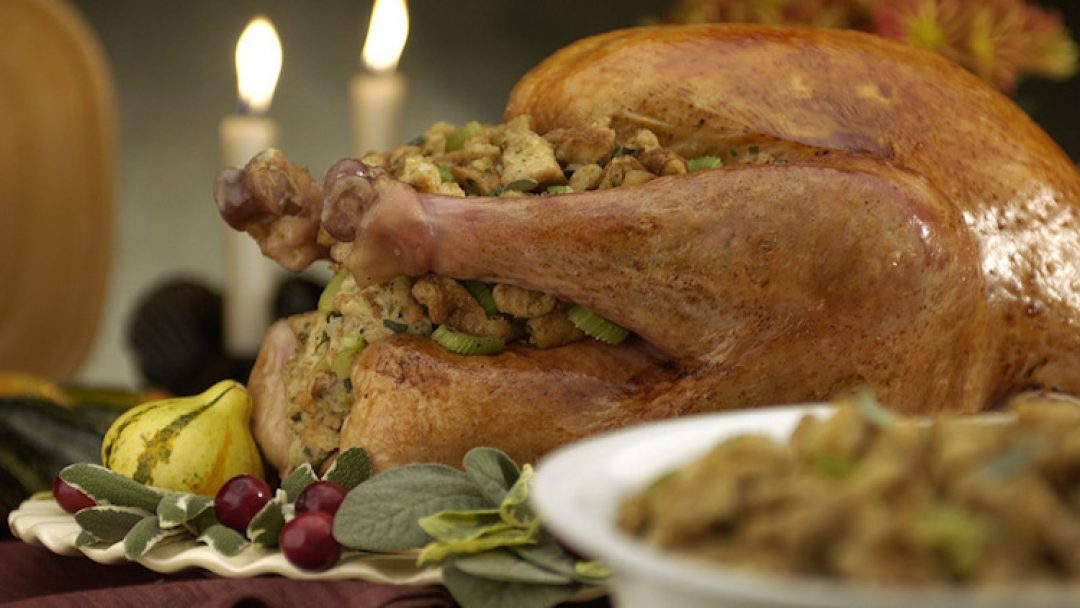The messaging from health agencies is unanimous: People are safer at home and avoiding large groups, even if it means skipping some holiday traditions. However, experts also understand the importance of connecting with family.
Dr. Charles Gerba is a professor in the Department of Environmental Sciences at the University of Arizona who, among other interests, studies the transport of pathogens. He emphasized the importance of limiting the number of people who meet up in person, as he believes that if there is an increase in social gatherings in Arizona, COVID-19 cases would rise as a result.
“I would try to cut down on family size for the holidays, rather than a large gathering — kind of put that off till summer,” Gerba said. “Coronaviruses, respiratory viruses, this is their peak season right now.”
The virus survives better in colder weather and lower humidity as well as when people are in closer quarters, he said.
“The holidays, in a way, are the perfect storm,” Gerba added.
Dr. Kelly Reynolds, an expert on disease transmission and professor at UA’s Mel and Enid Zuckerman College of Public Health, said it’s important to do your own risk assessment.
“If you want a no-risk holiday, you’re staying home by yourself,” Reynolds said.
Since September, Arizona’s reproduction rate for the new coronavirus has gradually risen. The rate had slowed in late June through July.
“While our state is not currently experiencing a surge to the degree other locations are experiencing right now, we have recently seen a shift of COVID-19 spread in the state in the wrong direction,” Dr. Cara Christ, director of the Arizona Department of Health Services, wrote in an Oct. 22 blog post.
“The main driver of transmission in Arizona and nationally appears to be small household gatherings where they feel safe because they are around family and friends and aren’t wearing masks or staying physically distanced,” Christ said in an Oct. 27 video.
She reminded Arizonans to “remain vigilant” about mask-wearing and social distancing, though patient admissions and emergency room visits are low and hospitals report “ample availability” of ventilators.
The CDC recommends keeping your guest list small and hosting activities with people who live locally as much as possible.
“The more (people) you have, the greater your risk,” Gerba said.
He recommends, if possible, that everyone get a rapid COVID-19 test a day or two before and avoid outside contact prior to the event.
When your guests arrive, they should practice good hygiene.
“I’d put a hand sanitizer right on your table and use it,” Gerba said. “Put it right at the door. Don’t let (guests) bring anything in on their hands.”
If you have someone who will be flying to visit, Reynolds recommends several precautions your guest could take.
“Some level of quarantining could be helpful so that you have a chance to develop symptoms or recognize that you might have symptoms before you expose other people,” she said.
The traveler should limit contact with others before getting on a plane and quarantine after arriving at their destination to see if any symptoms develop before mixing with people, she said.
The CDC says that hosts should consider asking their guests to avoid contact with people outside their households for 14 days prior to a gathering.
“They’re going to be getting on an airplane and you’re increasing your risk of not only exposing yourself but the people that you’re going to visit just through the process of traveling,” she said.
She also believes that with the precautions some airlines are taking, “in some ways now is the safest time to travel that it’s ever been.”
Gerba has been working with Boeing on establishing aircraft cleaning methods that disinfect against the novel coronavirus.
“All the data that we’re getting is the risk is fairly low if you wear a mask, with the disinfecting of the airplane and the way air flows and circulates,” he said.
Reynolds and Gerba recommended hosting a gathering outdoors if possible.
“The air flow is better. There’s no airflow buildup, and the air moves faster. So the risks become less than inside,” Gerba said. “And if you go inside, try to limit the number of people in a room — maybe four or five at the most.”
The CDC advises avoiding “crowded, poorly ventilated or fully enclosed indoor spaces.” Opening windows can increase ventilation.
“Exposure indoors is really increasing your risk. We know this because the virus is spread through large droplets which go through the air,” Reynolds said. “Now can you still get close to something outside and transmit COVID? Absolutely. But the natural airflow is very helpful versus inside, where you have a finite volume of air that’s recirculating.”
Reynolds reiterated that there is no such thing as a no-risk gathering.
“You can even have a low-risk event and still have an outbreak of COVID from that event,” she said. “These are all just kind of calculated risk reductions, but they’re not foolproof.”
The CDC recommends maintaining at least 6 feet of distance from people outside of your household. That could mean rearranging furniture so households can be seated in clusters to allow for social distancing.
Guests should wash their hands before serving or eating food, the CDC says.
“It’s obviously not practical to put your mask on between bites,” Reynolds said. But she recommends putting your mask back on when you’re not actively eating.
“I think if you’re inside and especially if you’re in less than a 6-foot contact, then the mask can really be protective for people,” Reynolds said. “And we know that people can be asymptomatic and shed the virus. We know that you don’t have to be sneezing and coughing to spread it into the air, even just talking.”
Echoing the CDC, she also suggested not singing or chanting while unmasked to minimize aerosols expelled indoors.
“Wearing masks is most important when social distancing is difficult. Wear masks when less than 6 feet apart from people or indoors,” the CDC advises.
If you have relatives or guests who don’t want to wear masks, that’s when it’s most important to socialize outside, Reynolds said.
According to the CDC, “there is no evidence to suggest that handling food or eating is associated with directly spreading COVID-19.”
However, “It is possible that a person can get COVID-19 by touching a surface or object, including food, food packaging or utensils that have the virus on it and then touching their own mouth, nose, or possibly their eyes. However, this is not thought to be the main way that the virus is spread.”
Some suggestions the CDC provides includes:
- Offering single-use hand towels for drying after handwashing.
- Asking guests to bring their own food and drinks.
- Limiting the number of people passing through food preparation areas.
- Choosing someone to serve the food so as to not share utensils.
- Offer single-use options for dressings, condiments and utensils.
By now, people should know whether they or a loved one is in the high-risk category for becoming seriously ill from COVID-19. This includes older adults and people with certain chronic diseases.
If you have symptoms of COVID-19 or have been exposed to the novel coronavirus in the last 14 days, you should not host or attend an event. The CDC recommends keeping a list of attendees for contact tracing purposes, should there be an outbreak.
Gerba suggested not hosting children, if possible, because they can transmit the coronavirus to adults while not showing any symptoms themselves. If children will be present, he recommended having them tested for COVID-19.
“We’re not through this yet, and you don’t want your holiday gathering to be the one that starts an outbreak in your family or your local community,” Reynolds said.
One thing she is considering for her own Thanksgiving celebration is: “If my parents, my kids, grandparents get COVID, and it’s from somebody that tested positive at my party, how am I going to feel about that in retrospect?”
“So thinking about what you don’t want to have to look back on, I think, is important. You don’t want to be the party that started this whole thing,” she said.
Click here to read the CDC’s recommendations on Thanksgiving and COVID-19.








